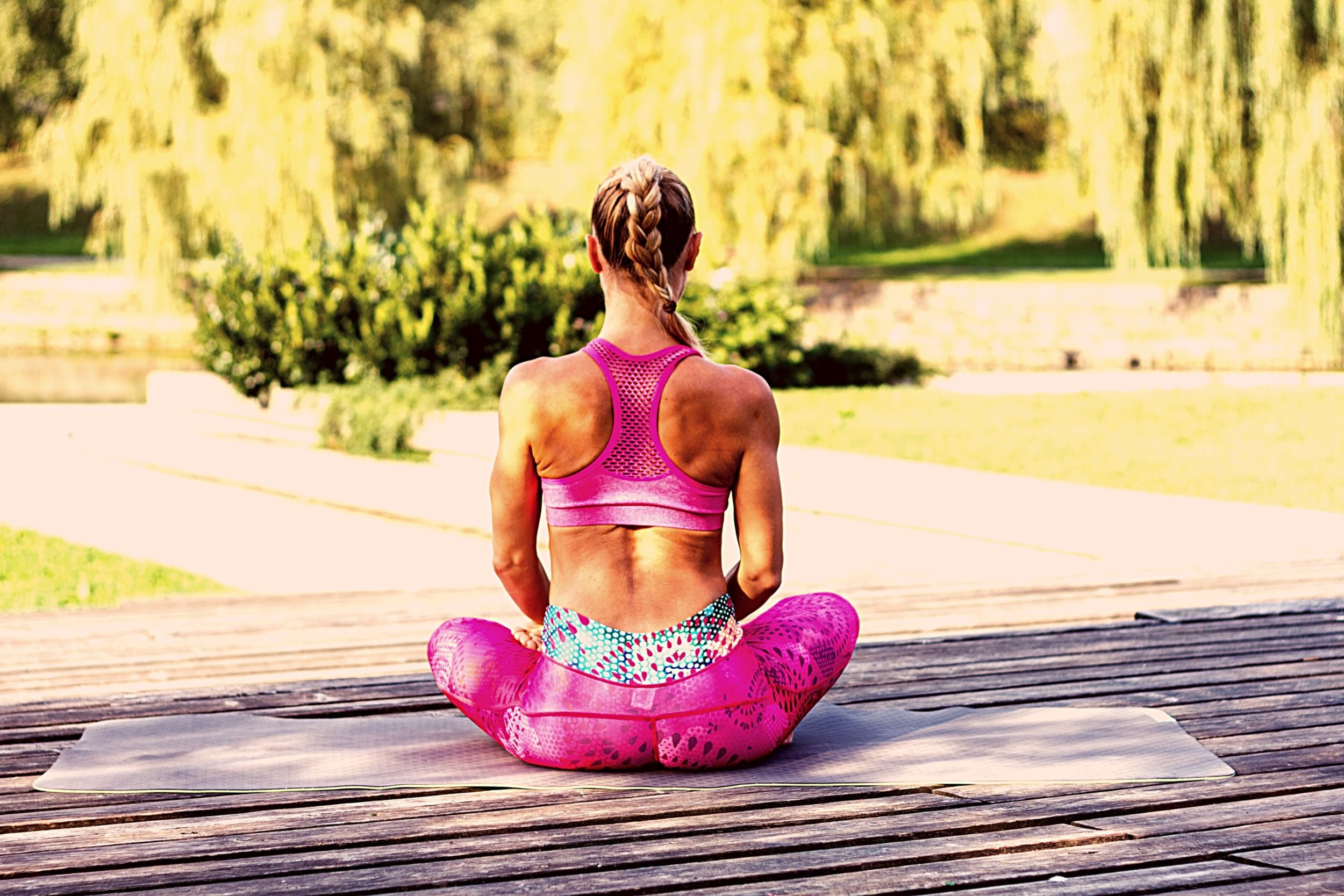
GET Posture CORRECTION
Find out what Good Posture is & Get Relief for all your Tight Muscles
What is Posture Correction?
Posture correction is an essential component of maintaining good
health and preventing various musculoskeletal issues. Poor posture can
lead to numerous problems, including pain, stiffness, muscle
imbalances, and even reduced lung capacity. By addressing
posture-related issues, you can reduce discomfort, improve mobility,
and enhance your overall quality of life.
Whether caused by sedentary lifestyles, poor ergonomics, or muscle
imbalances, poor posture can contribute to a range of physical
ailments. Many people are unaware of their posture problems until they
begin to experience discomfort or pain. Identifying and addressing
these issues early on can help prevent more severe problems later down the line.
What are the Causes of Bad Posture?
In addition to the common factors mentioned below, genetics, injuries, and certain medical conditions can also contribute to poor posture. It is crucial to identify the underlying causes of postural issues to develop a targeted and effective treatment plan that addresses these root problems, leading to lasting improvements in posture and overall health. Poor posture can arise from various factors, including muscle imbalances, weakness, and poor body mechanics. Certain lifestyle habits and environmental factors can also contribute to the development of poor posture. Some common causes of poor posture include:
Sedentary lifestyle: Prolonged sitting, especially in front of a computer or television, can lead to muscle imbalances and weakness, contributing to poor posture.
Muscle imbalances: Overdeveloped or tight muscles can pull the body out of alignment, while weak muscles may not provide adequate support for maintaining proper posture.
Poor ergonomics: Inadequate workplace setups or poorly designed furniture can contribute to poor posture by forcing the body into awkward or uncomfortable positions.
Obesity: Carrying excess weight can place additional strain on the spine and muscles, causing them to become fatigued and contributing to poor posture.
Age: As the body ages, muscle strength and flexibility can decline, making it more challenging to maintain proper posture.
Symptoms of Postural Pain & Dysfunction
Poor posture can manifest in a range of ways, including physical discomfort, fatigue, and reduced mobility. These symptoms may worsen over time if left unaddressed, further emphasizing the importance of recognizing and addressing postural issues as early as possible to minimize long-term complications. The symptoms of poor posture can vary depending on the underlying cause and severity of the issue. Some common signs and symptoms include:
Slouched or rounded shoulders: One of the most visible signs of poor posture, slouched or rounded shoulders can contribute to tension and pain in the upper back and neck.
Forward head posture: Often caused by prolonged screen time, forward head posture can lead to headaches, neck pain, and reduced range of motion.
Back pain: Poor posture can cause strain on the muscles and ligaments supporting the spine, leading to pain and discomfort in the lower, middle, or upper back.
Reduced mobility: Poor posture can lead to stiffness and reduced range of motion in the joints, making it more difficult to perform daily activities and increasing the risk of injury.
Fatigue: Maintaining poor posture requires the muscles to work harder to support the body, which can lead to feelings of fatigue and general discomfort.
How Massage corrects bad posture
Massage therapy can play a crucial role in posture correction by addressing muscle imbalances, releasing tension, and promoting relaxation. Massage is a valuable tool for promoting muscle balance and overall relaxation, both of which are essential for correcting posture. By addressing tight or overworked muscles, massage can help to restore proper alignment and function, allowing the body to adopt a more natural and healthy posture. Moreover, massage can provide a sense of calm and well-being, which can further support postural improvements. By targeting specific muscles and soft tissues, massage can help to:
Release tight muscles: Tight muscles can pull the body out of alignment and contribute to poor posture. Massage can help to release these tight areas, restoring balance and improving alignment.
Strengthen weak muscles: Massage can help to stimulate blood flow and improve nutrient delivery to weak muscles, supporting their growth and development.
Improve flexibility and range of motion: By releasing tight muscles and fascia, massage can help to increase flexibility and range of motion, making it easier to maintain proper posture.
Alleviate pain and discomfort: By addressing the underlying causes of poor posture, massage can help to alleviate pain and discomfort associated with muscle imbalances and misalignment.
Promote relaxation and stress reduction: Stress can contribute to muscle tension and poor posture. Massage can help to promote relaxation and reduce stress, encouraging the body to adopt a more natural and healthy alignment.
Benefits of Massage for Posture
In addition to the benefits mentioned earlier, massage can also contribute to improved mental and emotional well-being. As stress is a significant contributor to muscle tension and poor posture, massage can help to create a sense of relaxation and ease, ultimately promoting better body alignment and overall health. Incorporating massage therapy into a posture correction plan can offer numerous benefits, including:
Improved body awareness: Massage can help to increase an individual's awareness of their body and posture, making it easier to identify and correct issues.
Reduced pain and discomfort: By addressing muscle imbalances and promoting relaxation, massage can help to alleviate pain and discomfort associated with poor posture.
Enhanced overall well-being: Improved posture can lead to better physical health, increased confidence, and an overall sense of well-being.
Prevention of future issues: Regular massage can help to maintain muscle balance and proper alignment, preventing the recurrence of postural issues in the future.
Complementary to other treatments: Massage can be an effective complement to other posture correction techniques, such as chiropractic care, physical therapy, and exercise programs.
Future you will thank you
Seeking relief for postural issues not only leads to improved physical health but can also contribute to enhanced mental and emotional well-being. As poor posture can impact self esteem and confidence, addressing these issues can lead to a more positive self image and an overall increased sense of well being. Poor posture can have far reaching effects on an individual's physical health and overall quality of life. By seeking relief for postural issues, individuals can experience a range of benefits, including:
Alleviation of pain and discomfort: Addressing postural issues can help to alleviate the pain and discomfort associated with muscle imbalances and misalignment.
Improved mobility and flexibility: Correcting posture can lead to increased range of motion and flexibility, making daily activities easier and more enjoyable.
Prevention of future health problems: Poor posture can contribute to chronic pain, reduced mobility, and an increased risk of injury. By addressing postural issues early, individuals can prevent these complications from arising.
Enhanced overall well-being: Improved posture can lead to better physical health, increased confidence, and an overall sense of well-being.
Tailored Sessions Detailed to Your Life
At CloudForm, our skilled therapists understand the importance of proper posture and the impact it can have on an individual's overall health and well-being. Each session is tailored to the specific needs of the client, addressing their unique postural issues and working towards improving their alignment. Our therapists employ a range of techniques, such as deep tissue massage, myofascial release, and stretching exercises, to target the root causes of poor posture and provide lasting relief.
By working closely with our clients and developing a comprehensive treatment plan, CloudForm therapists can help individuals achieve better posture, reduced pain, and improved overall health. We understand that each person's journey to better posture is unique, and our therapists are committed to providing the support and guidance needed to achieve lasting results.
Why Choose Us to help you?
Read some of our amazing reviews by hundreds of beloved clients
Experienced, Professional, Therapeutic.
At CloudForm, our team of experienced therapists is dedicated to helping clients improve their posture and overall health. Our personalized approach to treatment ensures that each client receives the care and attention they need to achieve their postural goals. With a focus on addressing the root causes of poor posture, our therapists can provide lasting relief and improved overall well-being. By choosing CloudForm for your posture correction needs, you can trust that you are in the hands of knowledgeable and compassionate professionals who are committed to your success.

Correct your posture & get informed
FAQ About Posture
FAQ Section for Posture Correction
How long does it take to see improvements in posture after starting massage therapy? Improvements in posture can vary depending on the individual and the severity of their postural issues. Some clients may notice changes after just a few sessions, while others may require more extended treatment to see significant results. Consistency and commitment to the treatment plan are crucial for achieving lasting improvements.
Can massage therapy alone fix my posture? While massage therapy can play a significant role in improving posture, it is essential to incorporate other elements, such as strength training, stretching, and ergonomic adjustments, to achieve optimal results. A holistic approach to posture correction is most effective.
Is poor posture reversible? Yes, poor posture can be improved and corrected over time with the right intervention, such as massage therapy, exercise, and lifestyle changes. Early intervention is key to preventing long-term complications and achieving the best results.
How often should I receive massage therapy for posture correction? The frequency of massage sessions for posture correction will vary depending on your individual needs and the severity of your postural issues. Your therapist will assess your condition and recommend a treatment plan tailored to your specific requirements.
Can poor posture lead to chronic pain? Yes, poor posture can contribute to chronic pain in various areas of the body, such as the neck, shoulders, and lower back. Addressing postural issues through massage therapy and other interventions can help alleviate pain and prevent it from becoming chronic.
Is posture correction suitable for all ages? Yes, posture correction can benefit individuals of all ages. It is essential to address postural issues early on to prevent long-term complications and improve overall health.
What can I do at home to support my posture correction efforts? In addition to receiving massage therapy, practicing good ergonomics, stretching, and strength training can help improve your posture at home. Your therapist can provide specific recommendations tailored to your needs.
Are there any side effects or risks associated with posture correction? Posture correction, when done correctly and under the guidance of a professional, is generally safe and well-tolerated. However, it is essential to communicate with your therapist about any discomfort or concerns you may have during the process.
What Else Can Help Correct Posture?
Helpful Tips for Good Posture & Complementary Treatments
Practice proper ergonomics: Ensure that your workspace is set up correctly, with your computer monitor at eye level and your chair supporting your lower back.
Engage in regular physical activity: Incorporate both aerobic exercises and strength training into your routine to promote overall health and support good posture.
Stretch regularly: Focus on stretching the muscles that tend to become tight or shortened due to poor posture, such as the chest, shoulders, and hip flexors.
Strengthen your core: A strong core is crucial for maintaining proper posture, so be sure to include core-strengthening exercises in your fitness routine.
Be mindful of your posture: Regularly check in with yourself throughout the day to ensure that you are maintaining good posture, both while sitting and standing.
Use supportive footwear: Invest in shoes with good arch support and cushioning to promote proper alignment and reduce strain on your feet and legs.
Take breaks: If you spend a lot of time sitting, take regular breaks to stand up, stretch, and move around to prevent stiffness and maintain good posture.
Complementary treatments that can support posture correction efforts include:
Physical therapy: A physical therapist can help you develop an individualized exercise program to address muscle imbalances and improve posture.
Yoga: Practicing yoga can help increase flexibility, strengthen core muscles, and promote proper body alignment, all of which contribute to better posture. 3. Pilates: Similar to yoga, Pilates focuses on improving core strength, flexibility, and body awareness, supporting proper posture.
Rolfing: A form of bodywork that focuses on releasing tension in the body's connective tissue to improve posture and alignment.
Acupuncture: This ancient Chinese practice can help relieve pain and tension associated with poor posture, promoting relaxation and overall well-being.
Please note that massage therapists are not medical professionals and cannot diagnose or treat specific medical conditions. Massage therapy is a complementary treatment option and should not replace professional medical care. If you have concerns about your foot pain or suspect a more severe issue, consult with a healthcare professional for appropriate diagnosis and treatment.
Book With CloudForm Massage Today & Experience Our Difference.
We Look Forward to Seeing You!

